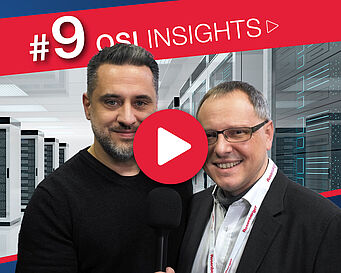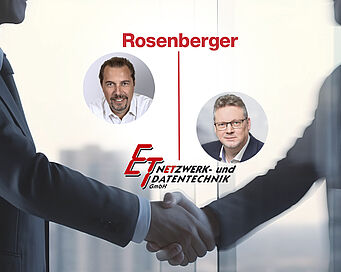Martin, you are the person responsible for processes in the Services unit. What exactly do you do?
Martin Lukas: At Rosenberger OSI, I am responsible for the Services sector. We offer our customers in the datacenter environment a wide range of different services. These mainly relate to the planning, construction, but also the operation of datacenter infrastructure. We concentrate on adopting a comprehensive, all-round approach for our customers.
I recently had the opportunity to talk with our colleague Matthias Reidans about the Federal Office for Information Security’s requirements concerning KRITIS. Many companies are currently faced with the decision as to whether or not to restructure their IT infrastructure. That means moving parts of it to the Cloud, keeping elements on-premises or relocating them to a colocation facility. How do we support businesses in this process?
Martin Lukas: It’s a very exciting task! At the moment, all companies are asking themselves the question: How can we design our IT infrastructure so that it is safeguarded against future developments? What specifically do we have to do to make sure that our infrastructure is future-proofed? In these fields, we are able to offer a very convincing consulting service. We work with our customers to examine the various possibilities. As you have said, we must consider various areas. There is the Cloud, which all our customers naturally want to gain maximum benefit from. However, and everyone should be aware of this, there are always certain elements of a company, of an IT landscape, which have to remain on-premises for a variety of reasons.
So that means that you look specifically at the applications in the IT environment and advise customers about what should stay in-house, that is to say on-premises, and what can be moved into the Cloud.
Martin Lukas: Precisely! That’s the way we go about things. That means that we work together with the customer in a phase during which we analyse their structure. We look at their applications, their processes and their entire landscape. That is to say, the customer’s complete business case. So it is a comprehensive, all-round approach.
So it’s a type of site survey. A survey in which you take everything into consideration.
Martin Lukas: Precisely! And that makes it clear what areas can be moved to the Cloud and what is better left on-premises. The next step is then to get together with the customer to think about the elements that are going to be kept on-premises. To do this, we develop fully customized concepts. We ask ourselves the following questions: Is the customer’s legacy datacenter still up-to-date? Does it need any revitalization measures? Is a possible new-build project planned? Might relocation to a colocation datacenter be a possibility? These are all different concepts that we examine together with the customer.
That means that there isn’t any blueprint in the strict sense. The analysis is performed for each customer individually.
Martin Lukas: Precisely! Within this approach, the only blueprint consists of the permanent outline constraints, which come, for example, from the Federal Office for Information Security, the TÜVit IT security verification body, or the standards. We take these as our starting point and develop a separate strategy specifically for each customer.
More info in our blog articles:




